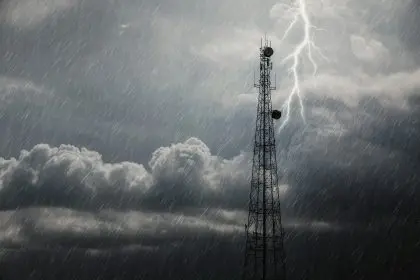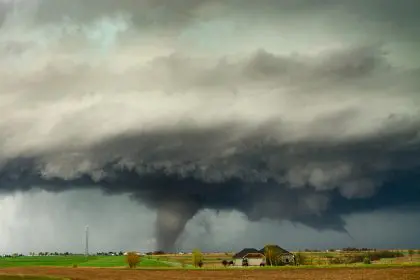The Lone Star state is currently battling an unusually early and potentially historic heat wave, with temperatures soaring to levels typically reserved for the height of summer. More than 7 million Texans find themselves under heat alerts this week as meteorologists predict a summer of extreme temperatures throughout the nation.
Early summer temperatures shatter records across Texas
Central and southwest Texas face particularly dangerous conditions, with temperatures reaching unprecedented highs for May. Austin could see thermometers hit 107 degrees on Wednesday, which would mark the hottest May day ever recorded in the city. Just a day earlier, Tuesday’s forecast of 104 degrees would become the hottest temperature ever documented so early in the year for Austin, and only the third time the city has experienced triple-digit heat this early in the season.
San Antonio residents must prepare for at least three consecutive days of 103-degree heat starting Tuesday – a streak never before recorded during May in the city’s history. Meanwhile, Del Rio faces a potential high of 110 degrees on Wednesday, which would be the earliest such temperature ever recorded there, tying for the 12th-hottest day in the city’s history.
Millions face major health risks from unprecedented heat
The National Weather Service has implemented its new “extreme heat warning” terminology for more than 5 million people in affected areas, replacing the previous “excessive heat” designation to emphasize the severe dangers these temperatures pose. The Austin metro area and central Texas fall under what officials categorize as “major” heat risk – conditions that can affect anyone without proper cooling or adequate hydration.
Parts of southern Texas near the Mexico border face even more serious “extreme” heat risk levels, appearing unusually early in the calendar year. The greater Houston area and San Antonio will experience “major” heat risks by Thursday.
Health experts express particular concern because this represents the first major heat event of the season, arriving before residents have acclimatized to high temperatures. “The risk for heat related illness is higher than normal,” warns the Austin-San Antonio forecast office, with elderly individuals and young children facing heightened vulnerability.
Climate change intensifies Texas heat events
Human-caused climate change continues to increase both the frequency and severity of extreme heat events across the United States and globally. Research from the nonprofit group Climate Central indicates that climate change has made San Antonio’s forecast high temperature on Wednesday approximately five times more likely than it would have been without fossil fuel pollution.
The statistics illustrate a troubling trend: before 2022, San Antonio had experienced only two heat waves featuring three consecutive days with temperatures of 105 degrees or higher. This week could potentially mark the sixth such stretch in just the past three years if temperatures climb slightly higher than currently forecast.
Heat remains the deadliest form of severe weather in the United States, claiming on average twice as many lives annually as tornadoes and hurricanes combined.
Power grid faces potential stress test
The unseasonably high temperatures could place significant strain on Texas’ independent power grid, potentially pushing electricity demand to record or near-record levels. The state has faced extreme weather-related electricity problems in the past, most notably during the winter power crisis of 2021. Since then, Texas has added substantial solar power capacity and battery storage to help mitigate such issues.
Texans should prepare for potential energy conservation measures and remain aware of cooling center locations in their communities as the heat intensifies.
National outlook projects scorching summer nationwide
While spring still has weeks remaining on the calendar, summer heat has already arrived in force, and meteorologists predict warmer than normal temperatures for the entire United States from June through August.
The Climate Prediction Center’s latest forecast shows above-average temperatures likely throughout the Lower 48 states, Alaska, and Hawaii this summer. The West, parts of the South, and Northeast face the highest probability of extreme heat – an outlook strikingly similar to last summer’s predictions, which proved accurate as the West experienced its second-warmest summer on record, the Southwest its warmest, and the Northeast its fourth-warmest.
Concerning precipitation patterns compound heat risks
The summer forecast includes troubling precipitation predictions that could exacerbate heat issues across much of the nation. Drier than normal conditions are expected throughout portions of the West, Midwest, and much of the Plains.
This creates a dangerous feedback loop: as areas become hotter, they dry out more quickly, potentially triggering new or worsening drought conditions. The dry ground then absorbs more solar energy, further increasing temperatures with little energy lost to evaporation.
Eastern and Southeastern states face the opposite challenge – wetter than normal conditions likely fueled in part by forecasts for an active hurricane season. Combined with anticipated heat, these regions may experience particularly humid summer months, creating dangerous heat index values that further stress vulnerable populations.
Preparing for the long, hot summer ahead
As temperatures continue climbing nationwide, public health officials recommend several essential preventative measures: stay hydrated, limit outdoor activities during peak heat hours, check on elderly neighbors and relatives, never leave children or pets in vehicles, and identify cooling centers in your area before emergencies arise.
With long-term forecasts suggesting persistent heat through the summer months, experts advise reviewing home cooling systems now and implementing energy-efficient practices to reduce both costs and strain on power infrastructure.
The current Texas heat wave serves as an early warning for what meteorologists predict will be another summer of temperature extremes across the country, reinforcing the need for both individual preparation and systemic adaptation to our warming climate.














